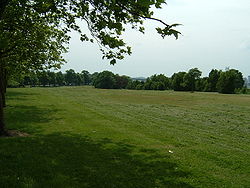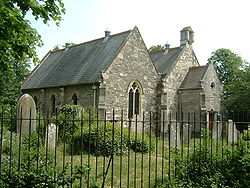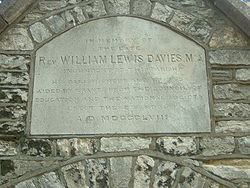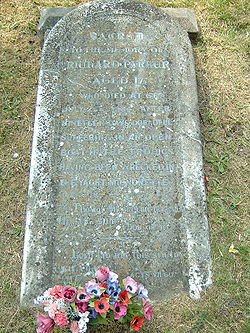
Peartree Green
Encyclopedia

River Itchen, Hampshire
The River Itchen is a river in Hampshire, England. It flows from mid-Hampshire to join with Southampton Water below the Itchen Bridge in the city of Southampton. The river has a total length of , and is noted as one of England's - if not one of the World's - premier chalk streams for fly fishing,...
in Hampshire
Hampshire
Hampshire is a county on the southern coast of England in the United Kingdom. The county town of Hampshire is Winchester, a historic cathedral city that was once the capital of England. Hampshire is notable for housing the original birthplaces of the Royal Navy, British Army, and Royal Air Force...
which adjoins the districts of Woolston, Bitterne
Bitterne
Bitterne is an eastern suburb and Electoral Ward of Southampton, England.Bitterne derives its name not from the similarly named bird, the Bittern but from the bend in the River Itchen; the Old English words byht and ærn together mean "house near a bend", most likely a reference to Bitterne Manor...
, Sholing
Sholing
Sholing, previously Scholing, is a district on the eastern side of the city of Southampton in southern England. It is located between the districts of Bitterne, Thornhill and Woolston....
and Merryoak within the city of Southampton.
It takes its name from the Pear Tree
Pear Tree
Pear Tree is an inner city suburb of Derby, England. It is situated next to the areas of Normanton, Rose Hill and Osmaston. Pear Tree could be described as a suburb within a suburb because the people of Derby would identify it as an area in its own right, but it could also be described as forming...
that once stood on the large green open space in this area. Some of that open space has since been urbanised, but a large proportion remains as a recreational area. It offers good views across the River Itchen
River Itchen, Hampshire
The River Itchen is a river in Hampshire, England. It flows from mid-Hampshire to join with Southampton Water below the Itchen Bridge in the city of Southampton. The river has a total length of , and is noted as one of England's - if not one of the World's - premier chalk streams for fly fishing,...
to the ancient part of Southampton
Southampton
Southampton is the largest city in the county of Hampshire on the south coast of England, and is situated south-west of London and north-west of Portsmouth. Southampton is a major port and the closest city to the New Forest...
previously known as Hamwic in Saxon times. It is possible to see the spire of St Mary's Church
St. Mary's Church, Southampton
St. Mary's Church, Southampton is the largest church in the city of Southampton, England and can trace its origins to the first Saxon settlements of the 7th century. In 1917, the sound of the church bells inspired the writing of the song, "The Bells of St. Mary's", later sung by Bing Crosby in the...
, the St. Mary's Stadium and the Itchen Bridge
Itchen Bridge
The Itchen Bridge is a bridge over the River Itchen in Southampton, Hampshire. It is a high-level hollow box girder bridge. It is located approximately 1 km from the river mouth. The bridge spans , is at its highest point and weighs 62,000 tons. It was officially opened July 13, 1977. At the...
.
Pre 1920, a small community



Roman Empire
The Roman Empire was the post-Republican period of the ancient Roman civilization, characterised by an autocratic form of government and large territorial holdings in Europe and around the Mediterranean....
at their settlement at Clausentum. Captain Richard Smith, former governor of Calshot Castle
Calshot Castle
Calshot Castle is one of Henry VIII's device forts, built on Calshot Spit at the Solent near Fawley to guard the entrance to Southampton Water...
lived at Peartree House from approximately 1617.
A small church, known as Jesus Chapel was completed in 1618, built by Captain Richard Smith. It was dedicated in 1620 and was the first new church to be built in England after the English Reformation
English Reformation
The English Reformation was the series of events in 16th-century England by which the Church of England broke away from the authority of the Pope and the Roman Catholic Church....
. Although it was not part of Southampton at that time, Jesus Chapel served the parish of St Marys Extra which was used as an overflow for the parish of St Marys in Southampton. Construction of Jesus Chapel saved parishioners from a rough crossing over the Itchen to Southampton or a long journey to the neighbouring churches at Hound
Hound, Hampshire
Hound is a village and civil parish in the borough of Eastleigh in southern Hampshire, England. The parish encompasses the village of Netley and includes such landmarks as Netley Castle and Netley Abbey...
, Botley
Botley, Hampshire
Botley is a historic village in Hampshire, England that obtained a charter for a market from Henry III in 1267. The area has been settled since at least the 10th century....
or South Stoneham
St. Mary's Church, South Stoneham
St. Mary's Church, South Stoneham is one of the two remaining medieval churches in the city of Southampton, England. Parts of the building date from the Norman period and the chancel arch is 12th century...
.
Pear Tree Church is the oldest Anglican Church anywhere in the world - being the first church built (1618) and consecrated (1620) after the Reformation.
Peartree House was altered in the late eighteenth century . It was once home to General Shrapnel
Henry Shrapnel
Henry Shrapnel was a British Army officer and inventor, most famously, of the "shrapnel shell".Henry Shrapnel was born in Bradford on Avon, Wiltshire, England....
inventor of the Shrapnel shell.
A boarding school
Boarding school
A boarding school is a school where some or all pupils study and live during the school year with their fellow students and possibly teachers and/or administrators. The word 'boarding' is used in the sense of "bed and board," i.e., lodging and meals...
was built next to Jesus Chapel in 1857.
By the late 19th Century, the area contained many impressive houses and villas which were home to Southampton
Southampton
Southampton is the largest city in the county of Hampshire on the south coast of England, and is situated south-west of London and north-west of Portsmouth. Southampton is a major port and the closest city to the New Forest...
's wealthy traders.
Itchen Ferry village
Itchen Ferry village
Itchen Ferry village was a small hamlet on the East bank of the River Itchen in Hampshire. The village took its name from the small fishing boats that were also used to ferry foot passengers across the river...
no longer exists, but it used to adjoin Peartree Green. The graveyard at Jesus Chapel contains a memorial to Richard Parker of Itchen Ferry village
Itchen Ferry village
Itchen Ferry village was a small hamlet on the East bank of the River Itchen in Hampshire. The village took its name from the small fishing boats that were also used to ferry foot passengers across the river...
, who died at sea following the wreck of the yacht Mignonette off South Africa in 1884. Cast adrift without provisions, his companions were forced to murder him and eat his flesh in order to survive. It is one of the few recorded cases of cannibalism
Cannibalism
Cannibalism is the act or practice of humans eating the flesh of other human beings. It is also called anthropophagy...
in modern times. The subsequent murder trial Regina v. Dudley & Stephens changed English law.
Post 1920, part of Southampton
Peartree Green was incorporated into the borough of SouthamptonSouthampton
Southampton is the largest city in the county of Hampshire on the south coast of England, and is situated south-west of London and north-west of Portsmouth. Southampton is a major port and the closest city to the New Forest...
in 1920. The area has subsequently experienced significant suburban development. The Boarding school became an Annex to Woolston School
Woolston School
Woolston School Language College was a secondary comprehensive school in Southampton, Hampshire, in southern England. The most recent Ofsted inspection was on 10 October 2006. The school was a Specialist Language College for student that were 11 to 16 years old...
but has since been converted into residential homes.

